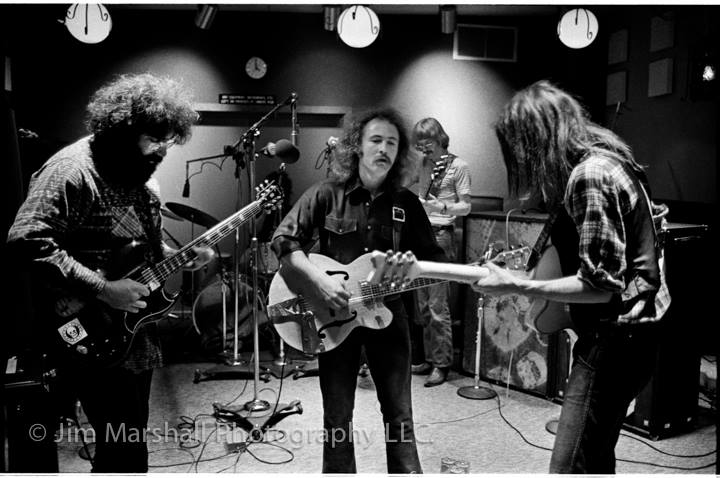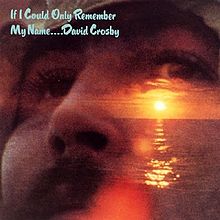2/22/71: David Crosby – If I Could Only Remember My Name
I’m currently mired in another winter writing motivational slump, but after letting a couple of key release dates slip by recently I wanted to get something down about one of my favorite albums, David Crosby’s solo debut If I Could Only Remember My Name, released this day 50 years ago.
I only learned about this album about twenty years ago, and I don’t recall how. I’d heard the live cut of Laughing on CSNY’s 4 Way Street album, but it didn’t occur to me to find out what album it’s from, and it didn’t resonate with me as the studio version would. This song, with Joni Mitchell’s beautiful backing vocal and Jerry Garcia’s haunting pedal steel guitar, is just one of the great songs on this release. While this is a solo release with the majority of its songs credited to Crosby alone, he enlisted the help of a number of friends in the studio.
Paul Kantner was concurrently recording his concept album Blows Against the Empire at Wally Heider Studios in San Francisco where Crosby was working, as were The Grateful Dead, who were laying down tracks for American Beauty. Kantner had help in the studio from a group of SF musicians loosely named the Planet Earth Rock and Roll Orchestra. This included Crosby, plus members of the Grateful Dead, Quicksilver Messenger Service, Santana, and Jefferson Airplane. Many of them also found their way into Croz’s studio to support his effort, and they were joined by Joni Mitchell, Neil Young, and Graham Nash. The result was an eclectic group of songs that form a record I find to be cohesive in some spots and beautifully disjointed in others. Either way, it works.

The dynamics at play here with the various relationships among the album’s musicians are interesting to me, including the fact that CSNY were in one of their “off” modes after the release of Déjà Vu, yet Neil Young co-wrote and played on the opening tracks to both sides of Croz’s album, including the angry and still relevant What Are Their Names. The autobiographical Cowboy Movie, written about the breakup of CSNY (which of course wouldn’t be complete without a reference to the “sweet little Indian girl,” a.k.a. Rita Coolidge), is another standout. Neil Young and Jerry Garcia trade guitar licks while the rhythm section features Mickey Hart, Bill Kreutzmann, and Phil Lesh. Cowboy Movie sounds like an early Grateful Dead track with Croz on vocals. It’s definitely a song to crank up to eleventy.

There are a couple of instrumentals on the album, but far from sounding like filler, they lend beautifully to the vibe of If I Could Only Remember My Name. That vibe to me is the come down from the 60’s and perhaps some somber reflections had by David Crosby about his own life and relationships at the time. Comparisons can be silly, but for the sake of this post I’ll share that I rate this album snuggly next to CSNY’s Déjà Vu, just behind the first Crosby, Stills & Nash album. It’s a little embarrassing that it took so long for me to “discover” it for myself, but it’s a keeper that cuts deeply some days.
Tracklist
Side One:
- Music Is Love
- Cowboy Movie
- Tamalpais High (At About 3)
- Laughing
Side Two:
- What Are Their Names
- Traction in the Rain
- Song with No Words (Tree with No Leaves)
- Orleans
- I’d Swear There Was Somebody Here
Bonus:
Kids and Dogs
-Stephen
https://ultimateclassicrock.com/david-crosby-if-i-could-only-remember-my-name/
https://www.allmusic.com/album/if-i-could-only-remember-my-name-mw0000196679
https://en.wikipedia.org/wiki/If_I_Could_Only_Remember_My_Name#Track_listing
https://pitchfork.com/reviews/albums/david-crosby-if-i-could-only-remember-my-name/





